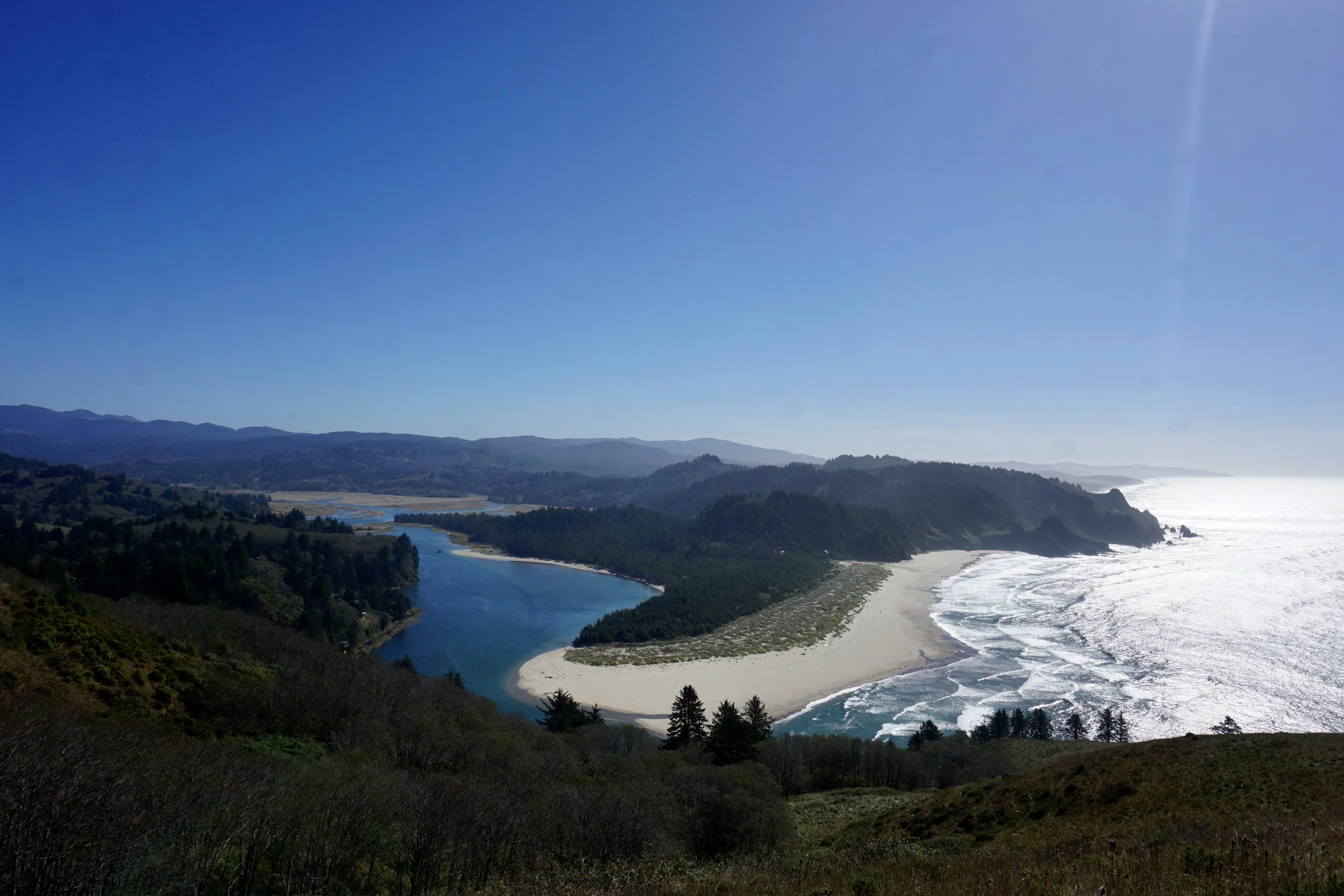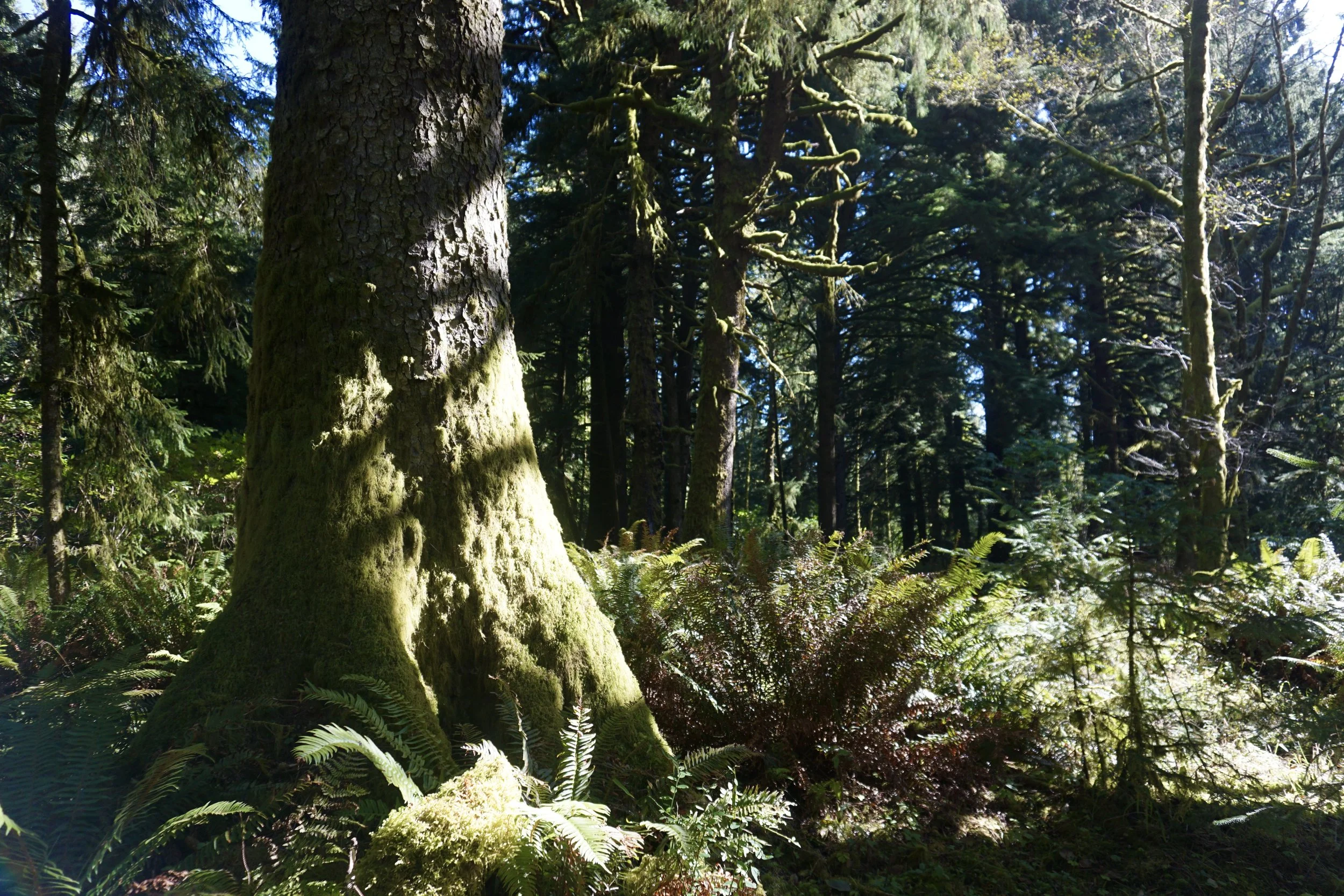Head upward
Feel on top of the world at Cascade Head Biosphere Reserve



By Michael Edwards
For the TODAY
The Cascade Head Biosphere Reserve, located toward the north end of Lincoln City, is a place quite unlike any other.
In addition to an old-growth Sitka spruce and western hemlock forest, the reserve is home to the endangered Oregon silverspot butterfly; tide pools and rock islands teaming with brown pelicans, rockfish and ochre stars; and an estuary on the mend, alive with Dungeness crabs, great blue herons, curious harbor seals and the metallic chatter of belted kingfishers.
Early fall at Cascade Head, the time before the gray curtain descends, is typically warm and clear, graced by gentle winds and more elk tracks than boot prints. The Cascade Head Biosphere Reserve is a UNESCO world heritage site visited by people from around the world and it is located in Lincoln City’s backyard.
Knight Park, located at the end of Three Rocks Road, is where visitors launch their Cascade Head explorations.
A boat ramp allows kayakers easy access to the estuary. The volume of water and the current’s powerful push and pull are the product of the Salmon River’s flow and the ocean tides. A few years back, my wife Kim and I, left our common sense in the Jeep and launched our kayaks into Nehalem Bay, also a tidal estuary. Within sight of Wheeler, we spied a black bear swimming across the slough and paddled blissfully through that omen’s wake. At low tide we stranded ourselves on a mudflat. When the incoming tide lifted our vessels and the Pacific winds blew us back into the bay, the “Big Banana Boat” succumbed to the swells. At least we didn’t leave the life jackets in the shed.
If you’ve never floated a kayak on an estuary before, bring a friend who has.
Cascade Head hikers trek north from the parking lot along a well-maintained trail, past the turnoff to the Sitka Center for Arts and Ecology. The dirt merges with asphalt and leads downhill to the main trailhead. The first section of the Cascade Head trail is steep. Erosion has degraded the stairs and excavated giant roots from the soil. Watch your step. Your ankles will appreciate your diligence.
Cascade Head’s giant conifers grow in rows, as if planted intentionally. On a forest floor crowded with deadfall, huckleberry and sword ferns, most of the fallen spruce cones vanish into the duff. The few spruce seeds fortunate enough to germinate do so atop exposed logs, otherwise known as nurse logs. The trees that survive generations of rot, avoid fire and bend without breaking against the November gales can grow for centuries to heights of more than 200 feet.
As the main trail flattens out, the spruce forest transitions into thickets of moss-draped elderberry and alder. Notice the muddy paths sliced through the alder groves. They are the transportation capillaries of Roosevelt elk. As you hike in the shade of the alders, the surf amplifies. When you break out of the trees and into the sunlit prairie, you are greeted by a panoramic view of the Pacific Ocean, Lincoln City, the Coast Range and the Salmon River estuary.
The prairie ecosystem is the product of generations of cultural burning, a practice where Native Americans burned the headland both to enhance the forage for elk and deer and to enable easier travel through the dense rainforest. Today, in order to maintain this unique coastal ecosystem, the Nature Conservancy conducts prescribed burns on the prairie.
Cascade Head speaks the universal language of Biophilia, a term coined by the late biologist and expert on all things related to ant colonies, Edward O. Wilson. Wilson defined Biophilia as, “humanity’s innate tendency to focus on life and lifelike processes and to be drawn into nature.”
The typical Oregon male looks out at the magnificent Cascade Head panorama, the sea-battered rock islands, the littoral sand spit separating the river from the ocean and finally to the northern harrier flying low and slow over the prairie, her powerful wings lit crimson by the setting sun, and after two minutes of stillness, Oregon man’s connection to the biophilic world cemented; his quest to live in the present satiated, he turns to his contented wife and whispers, “are we still going to your parents’ place to fix the washer. The Beaves are playing this afternoon.”
I found some finicky-yet-entertaining trail reviews on the Explore the Lower Cascade Head Trail page at AllTrails.com. My favorite unvarnished trail excerpt goes as follows, “To be honest, this trail is like a 2.7 out of 5. It was narrow, rocky and had sticks and tree roots on the ground.” If the prevalence of rocks, sticks and tree roots on the ground doesn’t dampen your spirit, then consider an afternoon with family and friends exploring the Cascade Head Biosphere Reserve.
For more information, go to www.fs.usda.gov/recarea/siuslaw/recarea or the Cascade Head Biosphere Collaborative website at www.cascadehead.org,
